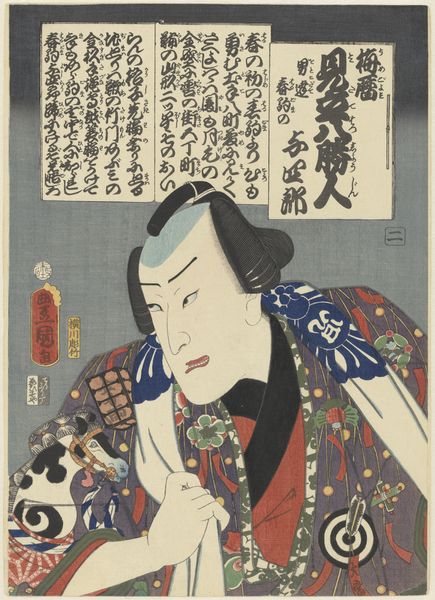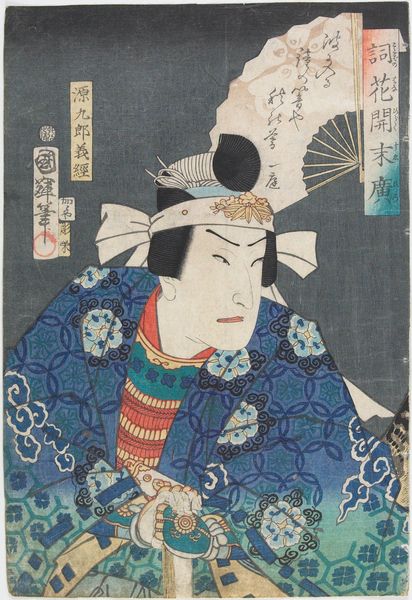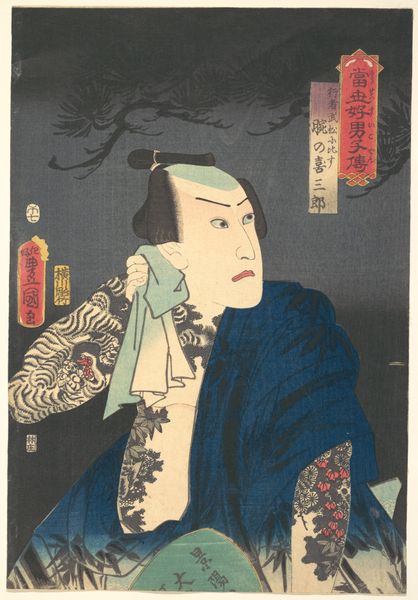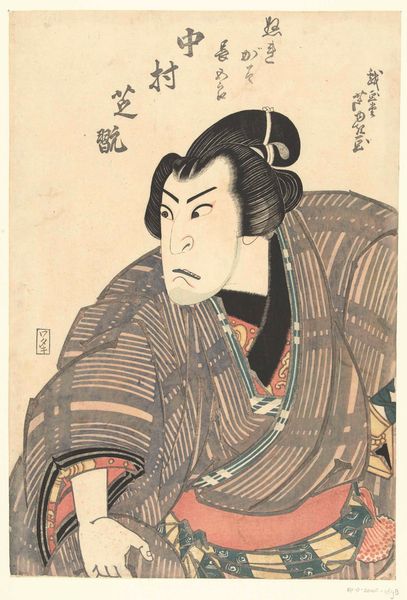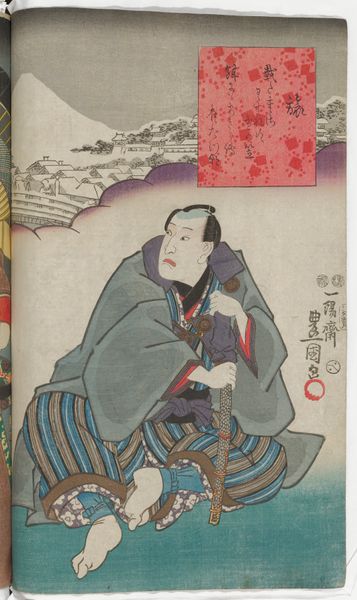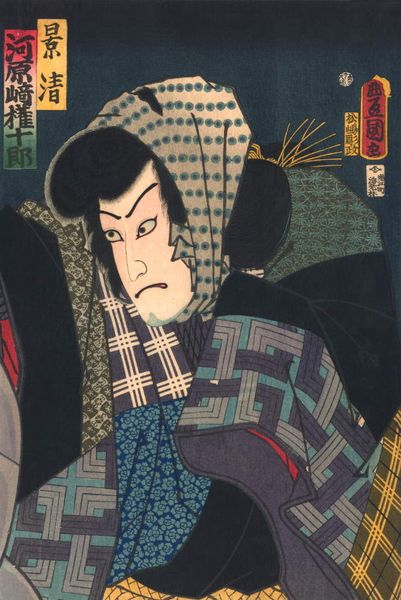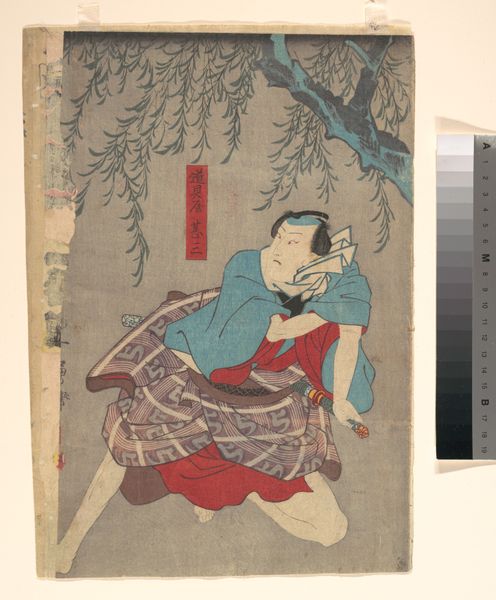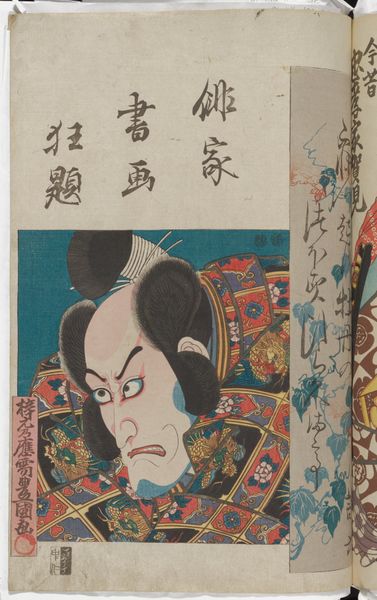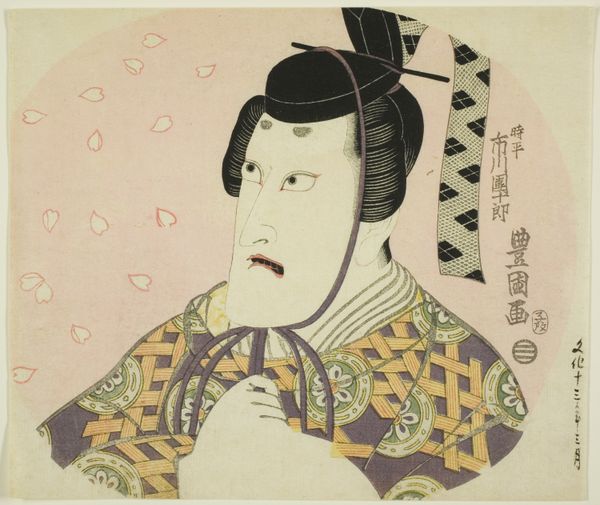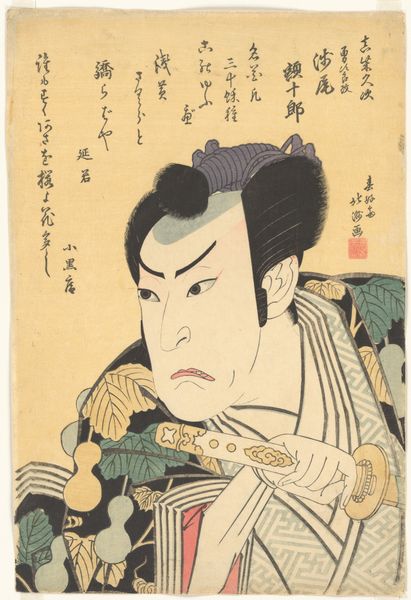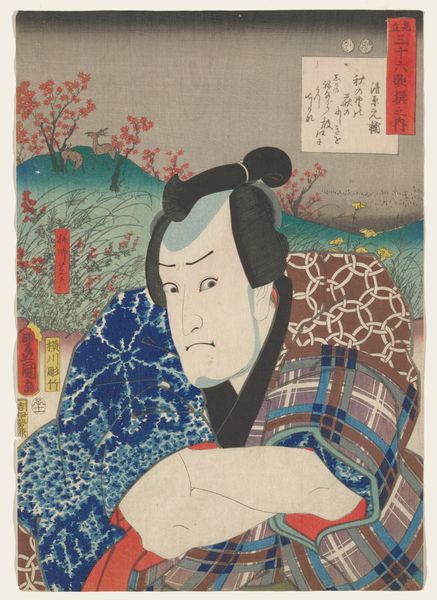
The Actor Ichikawa Ichizō III as Nozarashi Gosuke, likened to Shi Jin the Nine Dragoned (Kyūmonryū Shishin ni hisu), from the “Pine” triptych of the series A Modern Water Margin (Tōsei suikoden) 1854
0:00
0:00
print, woodblock-print
#
portrait
# print
#
caricature
#
asian-art
#
caricature
#
ukiyo-e
#
japan
#
woodblock-print
#
men
Dimensions: Vertical ōban; image 14 1/4 x 9 3/4 in. (36.2 x 24.8 cm)
Copyright: Public Domain
Curator: Utagawa Kunisada’s woodblock print, dating from 1854, captures Ichikawa Ichizo III in the role of Nozarashi Gosuke. The print belongs to a triptych called "Pine" from the series, A Modern Water Margin, currently housed at the Metropolitan Museum of Art. Editor: My immediate reaction is the striking contrast—the bold, graphic tattoos against the otherwise pale and almost stoic face. It’s a study in controlled tension. Curator: Indeed, it's interesting how Kunisada merges seemingly disparate visual elements. The “Water Margin” stories, popular narratives of bandit heroes, were reimagined in a contemporary context. What stands out for me is the fusion of actor portrayal, the character archetype from the novel, and the very material process of ukiyo-e printing itself. We are invited to think about not only image and symbol, but also artistic and popular consumption. Editor: Yes, and those tattoos—remarkably detailed, crawling with dragons—draw the eye. The textures and color gradients achieved with woodblock printing are exquisite and they define the actor’s embodiment of his role. He’s not merely wearing a costume; the ink melds performer and persona, as he becomes part of the drama. Curator: Consider the collaborative process of ukiyo-e production at the time. There were the artist's designs, the block cutter's interpretations, and the printer's execution – all adding their own voices to this finished piece. Moreover, the prints circulated widely in a consumer market hungry for depictions of famous actors, fictional heroes, and popular stories. It served to satisfy the increasing commodification of culture. Editor: Looking at his posture, so rigid yet subtly theatrical, is the composition. It is constructed in an intriguing way. There’s a certain geometric austerity offset by the organic swirl of the dragons. Kunisada seems to play with these oppositions: flat planes of color alongside hyper-detailed patterns. Curator: What is remarkable is how Kunisada took classical, idealized themes and situated them squarely in the bustling world of Edo-period popular culture, using new technologies and material means. That for me is where its impact truly resides. Editor: It’s precisely this combination of the formal and the dramatic that I find compelling. It creates a viewing experience which merges detail and form, so, after reflecting on its presence here, it’s more than an actor’s portrait, it's a meditation on spectacle.
Comments
No comments
Be the first to comment and join the conversation on the ultimate creative platform.
